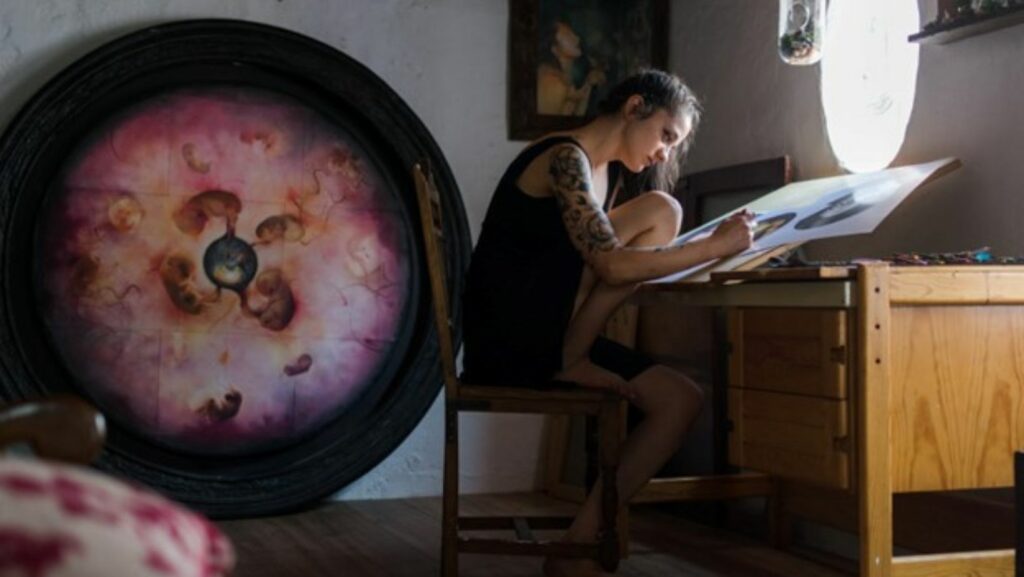
When I was a child, I vividly remember the first time I picked up a crayon. The array of colors at my disposal felt like endless possibilities were right at my fingertips.
Art can be just as accessible and liberating for you.
By following some simple techniques and allowing yourself the space to play, you can create stunning pieces of art, even if you’ve never touched a paintbrush before.
Getting Started with Basic Art Supplies
Starting with basic art supplies can seem daunting, but it’s simpler than you might think.
To get going, you’ll need some fundamental essentials: paper, pencils (both graphite and colored), a good eraser, and a sharpener. These basic tools will allow you to familiarize yourself with different techniques and styles without overwhelming you.
Remember, “basic” doesn’t mean “boring” — these foundational supplies are your gateway to endless creativity.
Essential Tools for Beginners
Starting with basic supplies—pencils, erasers, and sketchbooks—lays a strong foundation for exploring your artistic potential.
You don’t need an extensive collection to begin; a few versatile tools are enough. A good set of graphite pencils, an eraser, and a smooth sketchbook are ideal starting points.
As you progress, consider adding tools like colored pencils, markers, and charcoal. These allow more expressive techniques, broadening your creative horizons.
Affordable Alternatives and Where to Find Them
Creating art doesn’t have to be expensive. There are many budget-friendly alternatives that deliver excellent results.
Here’s a breakdown of budget-friendly alternatives:
- Graphite Pencils: Prismacolor Scholar pencils are found on Amazon or at local art stores.
- Sketchbooks: The Canson XL Series is available at Michaels and Target.
- Markers: Crayola Super Tips – can be purchased at Walmart and office supply stores.
- Erasers: Pentel Hi-Polymer erasers are commonly available at Dollar Stores and Staples.
Exploring Different Art Mediums
Embarking on your artistic journey, a variety of mediums can infuse your creations with distinct textures, colors, and emotions. Exploring different art mediums, such as watercolor paints, acrylics, pastels, and digital art, can open up a whole new world of possibilities. Additionally, working with canvas paintings provides a timeless and versatile option that can beautifully showcase your artistic expression.
Each medium offers unique challenges and rewards, providing new ways to express yourself and experience art. By experimenting with these different tools, you can discover what you truly enjoy and what best resonates with your artistic voice.
Drawing and Sketching
Drawing and sketching form the backbone of visual art, offering a versatile way to express ideas.
Here’s a breakdown of how to get started:
- Gather Your Supplies: Start with basic tools like pencils, erasers, sketchbooks, and ink pens.
- Learn Basic Shapes: Practice drawing circles, squares, and triangles to build your foundation.
- Study Elements of Art: Focus on lines, shapes, textures, and shading techniques.
- Use Reference Images: Work from photographs or real objects to improve accuracy.
- Practice Regularly: Dedicate time daily to sketch, enhancing muscle memory and skills.
Painting
Painting allows for vibrant color usage and expressive brushwork, making it a highly rewarding medium for beginners.

Here’s a roadmap to get you started:
- Choose Your Medium: Decide between acrylics, oils, or watercolors based on drying time and texture.
- Gather Essential Supplies: Basic brushes, a palette, canvas or paper, and paints are necessary.
- Understand Color Theory: Learn about primary, secondary, and complementary colors to mix and create vivid palettes.
- Experiment with Techniques: Try different brushstrokes, blending, and layering to discover your style.
- Practice Patience: Allow yourself to make mistakes and learn from them; art is a process.
Digital Art
Digital platforms allow artists to experiment with various techniques without the need for physical supplies. Apps and software programs like Adobe Photoshop, Corel Painter, and Procreate provide intuitive tools that mimic traditional art mediums.
Additionally, digital art allows for a non-destructive workflow, meaning you can easily modify or undo mistakes. This flexibility helps you feel less apprehensive, knowing that any errors can be corrected without compromising the overall piece.
To begin, explore tutorials on platforms like YouTube or join online communities where you can share your work and gain constructive feedback. Many digital artists share their tips and tricks, helping you to learn and improve.
Step-by-Step Art Projects for Beginners
Starting your journey with step-by-step art projects can build your confidence, making the process less intimidating. These types of projects provide a structured approach, allowing you to focus on one element at a time, which is perfect for beginners.
To practice, you might start with a simple exercise like “drawing a still life.” Gather a few objects you like and arrange them in a visually pleasing way. Then, using basic sketching techniques, try to capture their shapes and proportions.
Simple Still Life Drawings
Selecting objects for your still life is quite simple. The key idea is to pick items that you find interesting or meaningful, such as fruits, vases, or everyday household items. Generally, aim for objects with varied shapes and textures to add depth and make your composition visually engaging.
Choose a good light source – it could be natural daylight from a window or a desk lamp – to highlight the shapes and shadows. This contrast between light and dark areas will help you to understand and represent the three-dimensional forms on your sketchpad.
As you sketch, focus on observing the objects closely, noting the nuances in their shapes, textures, and how they interact with light. Gradually, with consistent practice, you’ll find yourself gaining confidence and precision.
Easy Landscape Paintings
Start by choosing a reference photo or a memorable scene. Focus on simple landscapes: think of open fields, peaceful beaches, or serene mountain views. These simpler scenes reduce the complexity and make it easier to capture essential elements.
Use a limited color palette to begin with. Select a few harmonious colors that evoke the mood of your scene. For instance, blues and greens for a coastal scene or varying earth tones for a desert landscape.
Begin with broad strokes to sketch the horizon line and main elements, like trees or mountains. Gradually add details, such as shadows and highlights, to bring depth and realism to your piece. Don’t worry about perfection; aim to capture the essence and feel of the scene.
Remember, the goal is to enjoy the process. As you practice more, you’ll find your unique style. Happy painting!
Custom Paint by Numbers: An Easy Start for Beginners
Creating art can feel intimidating, but custom paint by numbers is a wonderful way to begin. Choose a kit that appeals to you; many companies offer personalized paint by number kits where you can turn personal photos into a paint-by-numbers project.
Organize your materials by setting up your workstation with all the paints, brushes, and canvas included. Also, have a cup of water and a cloth for cleaning brushes. Follow the numbers on the canvas, each corresponding to a specific paint color.
There’s no rush, so take your time. Enjoy the process and take breaks as needed to avoid fatigue. Once completed, let the painting dry thoroughly and consider framing it for your home or giving it as a gift.
Custom paint by numbers is a relaxing way to get started with painting without the stress of freehand drawing. With each completed section, you’ll gain confidence and see your artwork come to life. This method allows you to focus on the enjoyable aspect of painting.
Understanding Color Theory
The basic building blocks are the primary colors: red, blue, and yellow. These colors cannot be created by mixing other colors but can be combined in various ways to produce secondary colors. Understanding how to mix these effectively allows you to create harmony within your artwork.

The secondary colors are orange, green, and purple. By further mixing, you get tertiary colors like red-orange or blue-green – enriching your palette even more! Learning how these colors interact makes your art more dynamic and visually interesting.
A useful tool is the color wheel, a visual representation of color relationships essential for mastering color harmonies. A color wheel helps in creating balanced and aesthetically pleasing color schemes.
Mastering Basic Shapes and Forms
Before diving into complex subjects, artists must understand that shapes and forms are the foundation of visual art. Circles, squares, triangles, and lines are the building blocks of any masterpiece. These basic shapes can be seen in every piece of art.
Form, a crucial aspect, refers to the three-dimensional quality objects can have (like cubes, spheres, and pyramids) and their interaction with light and shadow. Building proficiency with these basic components sets the stage for creating more intricate and compelling artworks.
Always remember that the goal is to train your eyes to see the shapes and forms around you. Observing everyday objects and translating them into basic shapes sharpens your perception and enhances your drawing ability.
Conclusion
Everyone can create beautiful art with the right mindset and practice. Art isn’t about perfection; it’s about expression. You lay a solid foundation for your creativity by embracing shapes and forms.
With practice, patience, and the right approach, anyone can turn their artistic vision into reality. It’s not about “talent” but about allowing yourself to explore and enjoy the process. So, gather your materials and start creating; your journey in art begins now!












